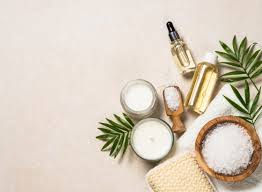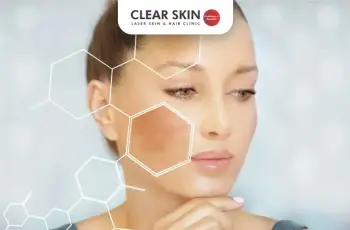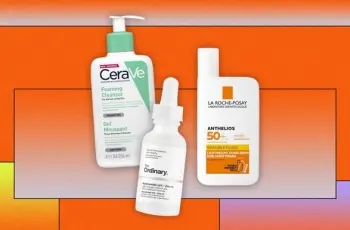
Can You Use Retinol and Hydroquinone at the Same Time?
Skincare has become a journey of powerful ingredients, each promising a unique solution. Two heavyweights in this arena are retinol and hydroquinone—but can they be used together?
This is a question many skincare enthusiasts are asking. The idea of combining two powerhouse ingredients can seem risky, but also promising if done correctly.
Let’s explore their benefits and how they can work side by side.
What Is Hydroquinone?
Hydroquinone is a potent skin-lightening ingredient used to treat discoloration. It’s commonly recommended for hyperpigmentation, melasma, and dark spots.
It works by inhibiting melanin production. Melanin is the pigment that gives your skin its color, and excessive production leads to dark patches.
Hydroquinone suppresses the activity of melanocytes, the cells that produce melanin. By slowing this process, it helps even out skin tone over time.
Despite its efficacy, hydroquinone has had a controversial history. In the 1980s, questions arose regarding its safety and long-term use.
However, recent studies and dermatological use show that hydroquinone is safe in regulated amounts. It is available in both prescription and over-the-counter forms.
Lower concentrations (2% or less) are sold in drugstores, while higher doses (up to 4%) usually require a prescription.
If you have sensitive or dry skin, hydroquinone may cause irritation, redness, or peeling. Always patch test before use and consult a professional.
People with darker skin tones should be cautious. Hydroquinone may worsen hyperpigmentation if not used properly and under dermatological supervision.
What Is Retinol?
Retinol is one of the most well-researched and praised skincare ingredients. It’s a derivative of vitamin A and is loved for its anti-aging benefits.
It boosts collagen production, improves elasticity, and reduces the appearance of fine lines, wrinkles, and sagging.
Retinol also helps treat hyperpigmentation by speeding up skin cell turnover. This removes dull, dead skin cells to reveal a brighter complexion underneath.
It keeps pores clear, reducing acne and blackheads. As a bonus, retinol also enhances skin tone and texture with consistent use.
However, retinol increases your skin’s sensitivity to sunlight. Using it without proper SPF protection can result in damage and reduced effectiveness.
Always apply retinol at night. It is sensitive to sunlight, and exposure during the day can make it ineffective.
If you’re new to retinol, start slow. Introduce it into your routine gradually, using it every third night before increasing frequency.
Can You Use Retinol and Hydroquinone Together?
Yes, retinol and hydroquinone can be used together, but it requires caution. Both are powerful and may irritate the skin when used improperly.
Combining them can deliver enhanced results for pigmentation issues, but it also increases the risk of dryness, peeling, or redness.
To minimize side effects, it’s best to apply them separately. Wait at least 30 minutes between applications to allow your skin’s pH to stabilize.
For example, apply hydroquinone first, then retinol after half an hour. This ensures both ingredients work effectively without clashing.
Follow up with a hydrating moisturizer. Choose one containing hyaluronic acid or ceramides to strengthen the skin barrier and prevent irritation.
This layered approach allows your skin to benefit from both treatments while minimizing the risk of over-exfoliation or inflammation.
Start slowly—perhaps using each ingredient on alternate nights at first. This helps your skin adjust and reduces the chance of irritation.
If you experience stinging, peeling, or increased sensitivity, pause usage and consult a dermatologist before resuming.
What Should You Avoid Using With Hydroquinone?
Hydroquinone is powerful, but it doesn’t mix well with every ingredient. Certain combinations can lead to skin damage or chemical reactions.
Avoid using hydroquinone with benzoyl peroxide or hydrogen peroxide. When combined, they can cause temporary dark staining on the skin.
These stains usually fade, but the combination also increases irritation and severe dryness, which is best avoided.
Be cautious with exfoliating agents. AHAs and BHAs like glycolic acid, lactic acid, and salicylic acid can be too harsh alongside hydroquinone.
Using these acids may strip your skin’s natural oils, making it dry and vulnerable. This can trigger rebound oil production and breakouts.
Avoid physical exfoliants like scrubs or brushes when using hydroquinone. These can further irritate the skin and reduce tolerance to the treatment.
If you must exfoliate, use gentle formulas and space them out. Don’t combine intense exfoliation with hydroquinone use on the same day.
Can Hydroquinone Be Combined With Other Products?
Yes, hydroquinone can work well with certain ingredients. It’s all about choosing hydrating and soothing products to balance its effects.
Pair hydroquinone with niacinamide, which helps strengthen the skin barrier and calm inflammation.
You can also combine it with hyaluronic acid, a deep hydrator that prevents the dryness hydroquinone sometimes causes.
Look for fragrance-free and non-comedogenic products to avoid clogging pores or worsening irritation.
Always read product labels and follow usage instructions. If unsure, consult a skincare professional to help tailor your regimen.
Is Retinol the Same as Hydroquinone?
No, retinol and hydroquinone are different, although they target similar concerns like dark spots and uneven skin tone.
Retinol increases skin cell turnover, meaning it helps your skin shed dead cells faster and stimulates new cell growth.
This turnover process removes surface pigmentation and makes skin look brighter and smoother over time.
Retinol also has antioxidant properties. It protects the skin from environmental stressors like pollution and UV rays.
On the other hand, hydroquinone works deeper in the skin, reducing melanin production and blocking pigment from reaching the surface.
In short, retinol removes existing discoloration, while hydroquinone prevents new pigment formation. Together, they can tackle hyperpigmentation from both ends.
Should Hydroquinone Be Applied to the Whole Face?
Yes, hydroquinone can be applied across the entire face, especially if you’re treating widespread pigmentation or uneven skin tone.
Apply a thin, even layer across your face, avoiding the eyes and mouth. For dark spots or scars, apply a bit more product directly to those areas.
After applying hydroquinone, always follow with a broad-spectrum SPF during the day. This prevents further sun damage and keeps pigmentation from worsening.
Sun protection is crucial because UV rays can counteract hydroquinone’s effects, making pigmentation return or worsen.
How Long Should You Use Hydroquinone?
Hydroquinone isn’t meant for long-term use without breaks. Dermatologists often recommend using it for no longer than 6 weeks at a time.
After 6 weeks, take a break of around 3 weeks. This allows your skin to rest and reduces the chance of developing resistance or irritation.
During this break, you can maintain your skin with other brightening ingredients like azelaic acid or vitamin C.
Always speak with your dermatologist before starting or resuming hydroquinone. Your skin’s response will guide how often you can use it safely.
Final Thoughts: Can They Coexist in Your Routine?
Yes, retinol and hydroquinone can work together, but only with the right approach. The key lies in balance, timing, and hydration.
Together, they provide a strong defense against hyperpigmentation, dullness, and signs of aging. Just ensure you build your routine slowly.
Introduce each ingredient separately if you’re a beginner. Once your skin adjusts, you can begin layering them with care.
Use a barrier-repairing moisturizer to seal in hydration. Apply sunscreen every single morning—no exceptions.
Your skin will thank you for it.
If you ever have concerns, consult a dermatologist. Professional guidance ensures you get results without harming your skin.


